Speeding out of Sub-Saharan Africa and into our Big Cats show, our leopard alights on a thick tree branch, resting before springing on to find its next meal. This diorama is truly unique, and, we think, one of our most memorable models to date. On its own, this leopard would no doubt be impressive, but the addition of the broad tree trunk, from which the leopard’s perch protrudes, creates an immersive scene unlike any other that we have created. The whole model, totalling 87,800 individual pieces, took 500 builder hours and no small amount of skill to build.
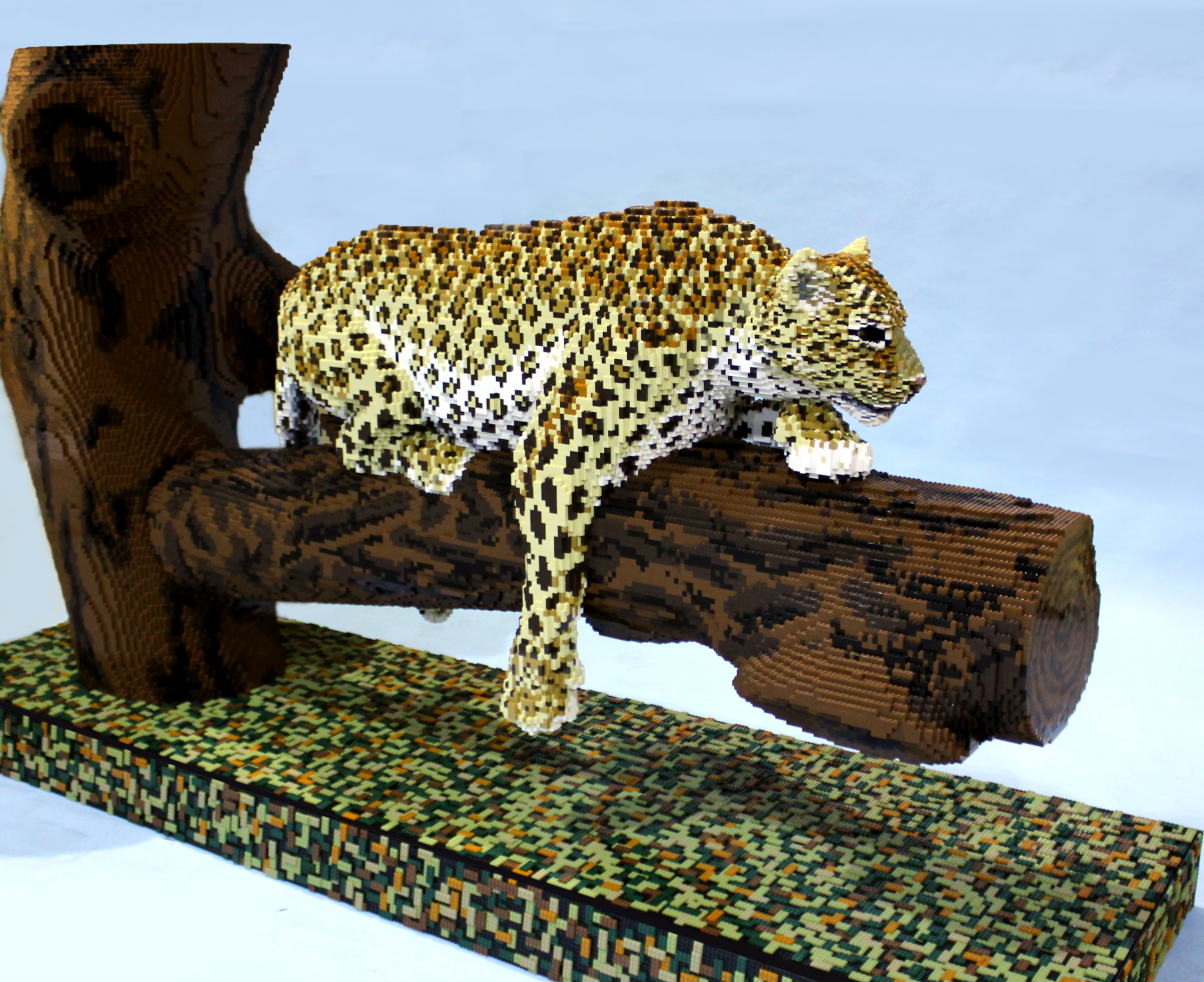
Leopards are among the most recognisable big cats on the planet, listed with lions, tigers, jaguars and cheetahs as the “big five” felines. With a lion and a tiger recently under our belt, and Big Cats on the horizon, a leopard was a fitting choice for our next project. This powerful feline, known among other things for being capable of running at up to 58km/h, is here instead shown in a moment of inaction, not so much sleeping as gently resting its haunches for a while. You can imagine its eyes darting left to right, scanning the savanna or the forest floor both for prey, and for any rival predator that might seek to take advantage of the leopard’s inactivity. The eyes themselves are trans-clear dishes, with tan bricks underneath creating the dull yellow glow of the leopard’s piercing gaze.
“Is [the leopard] regarding you as another predator, or as prey?”
Of course, the leopard is known for its spots, also called “rosettes” for their often-floral shaping, and in that respect, it is in the face where this model comes into its own. No SNOT (studs-not-on-top) is used here; instead, the leopards defining patterns are layer upon layer of carefully placed plates, in black, tan, nougat, and dark orange. The result is a fine level of detail often difficult to achieve in a character’s face, while also leaving this feline’s features uncluttered by the explosion of texture.
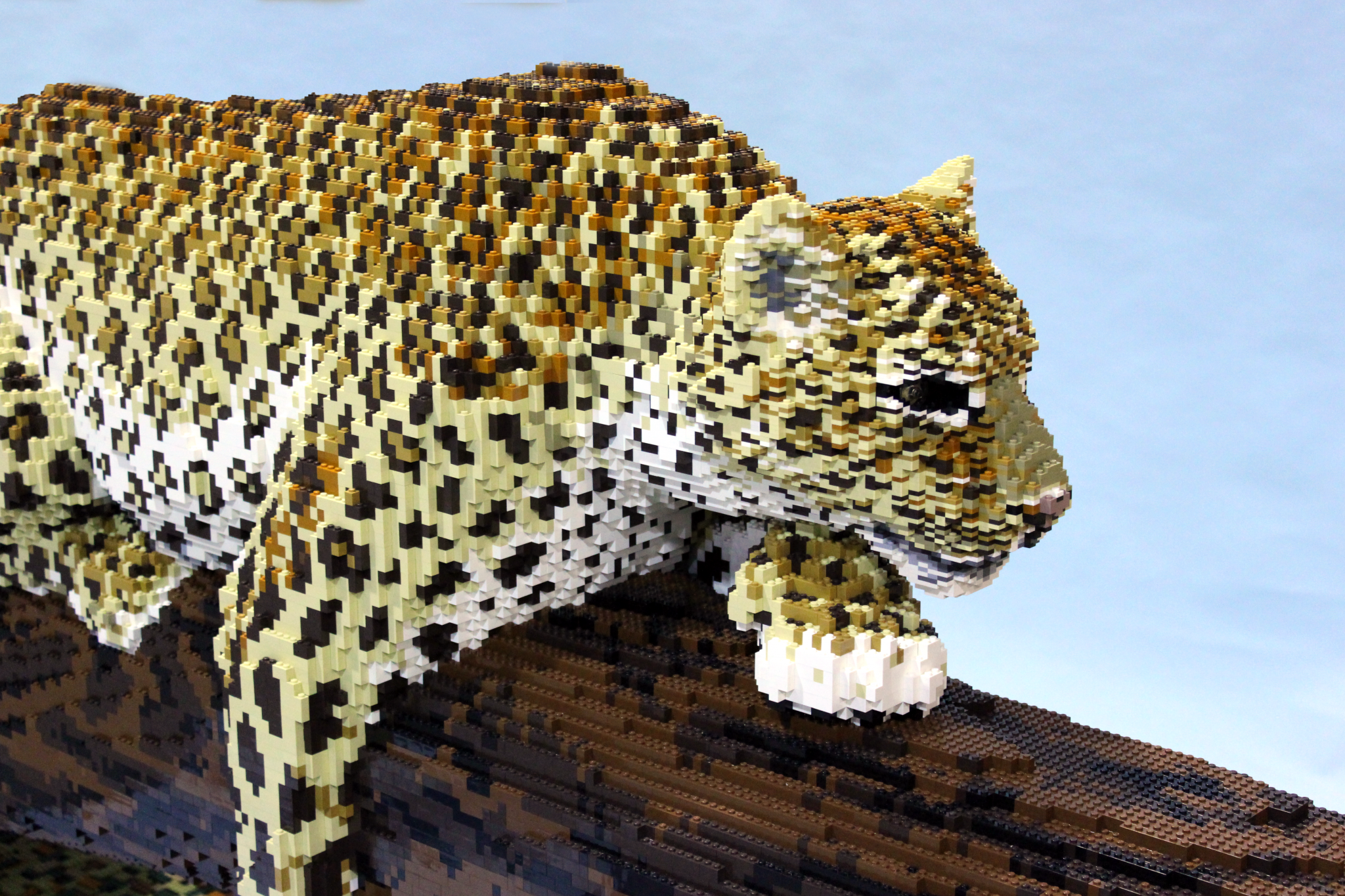
Impressive as the leopard is on its own, the tree on which it is resting elevates it to new heights. Leopards are skilled climbers, and suddenly our life-size diorama reflects this, taking us into the leopard’s environment, immersing us in the ever-moving nature of life as a born hunter, never stopping or resting for long. The branch itself is, astonishingly, suspended from the trunk, holding the weight of the leopard without any additional support, as though it is truly sprouting from a tree.
You might even feel the leopard is watching you, but is it regarding you as another predator, or as prey?
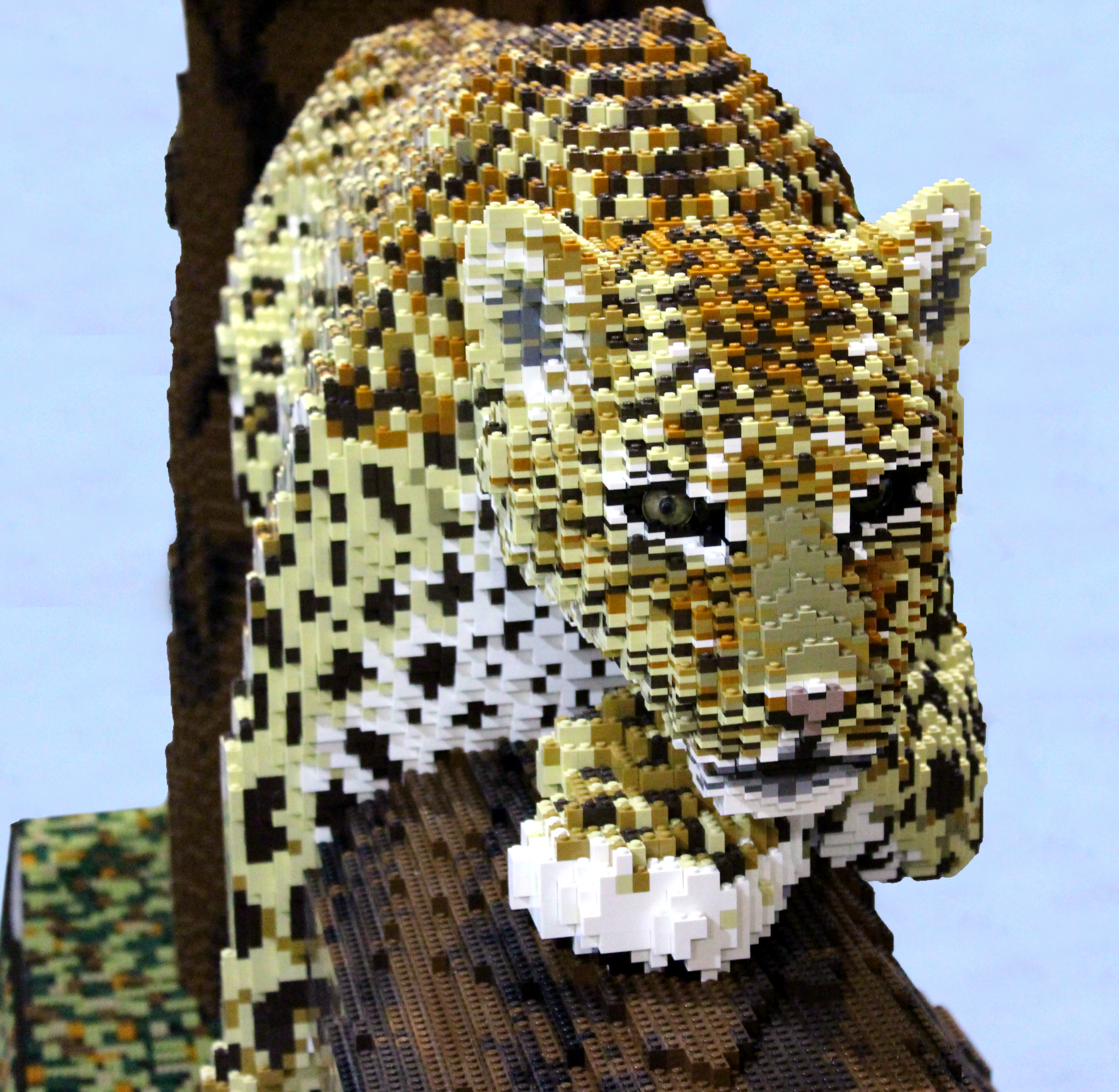
Words and photos by Bright Bricks.

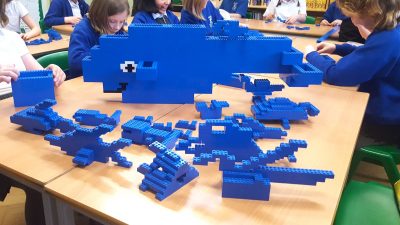
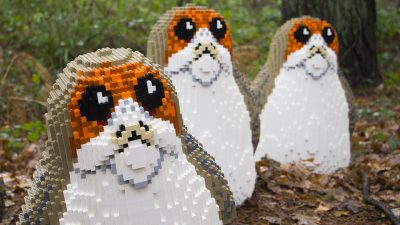
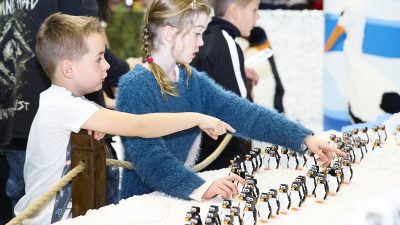
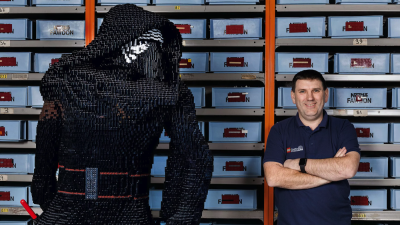
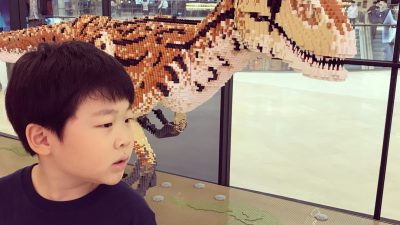
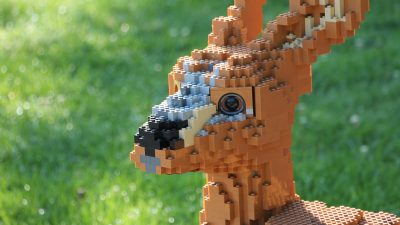
Comments